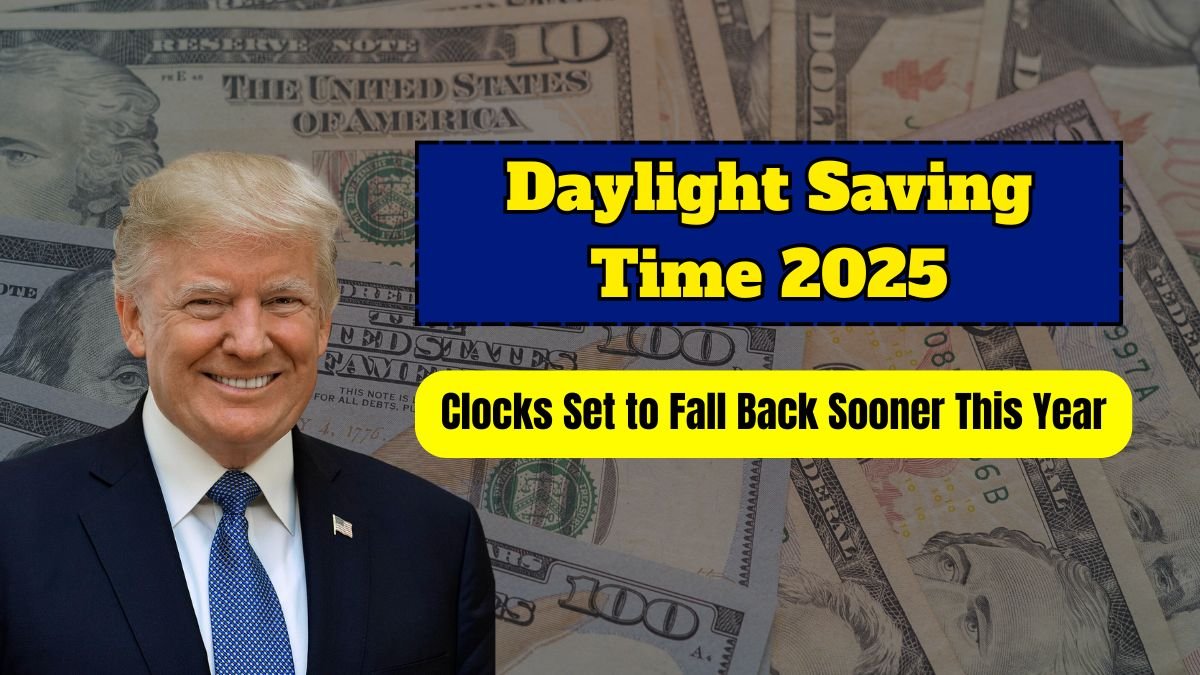Michigan residents are now experiencing shorter days. In less than a month, we will have to turn our clocks back an hour, leading to darker evenings. This change coincides with the end of Daylight Saving Time (DST).
As November approaches, it is important to understand what Daylight Saving Time is, why it exists, and what changes occur when it ends.
The Origin of Daylight Saving Time
Daylight Saving Time ends on November 1st, the first Sunday of November. On this day, we must set our clocks back by one hour.
This adjustment affects sunrise and sunset, which will occur an hour earlier. While the evenings will get darker sooner, mornings will be lighter.
Additionally, we will gain an extra hour at night, providing an opportunity to adjust our sleep schedule and daily routine.
What is Daylight Saving Time?
Daylight Saving Time, often called Daylight Savings Time, is the period when daylight begins an hour later in the morning and lasts an hour longer in the evening.
According to the National Institute of Standards and Technology (NIST), the purpose is to coordinate working hours with daylight, maximizing the use of natural sunlight.
This also helps conserve energy, as people spend more time outdoors during daylight hours and consume less electricity at home.
Daylight Saving or Daylight Savings?
While commonly called Daylight Savings Time, the correct term is Daylight Saving Time.
The “s” at the end is a common mispronunciation or misspelling, but the official term does not include it.
When Will DST Begin in 2026?
Daylight Saving Time will begin again on March 8, 2026, the second Sunday in March.
On this day, clocks will move forward one hour, causing sunrise and sunset to occur an hour later. This ensures maximum daylight usage in the evenings.
Purpose of Daylight Saving Time
The primary goal of Daylight Saving Time is to save energy and make optimal use of daylight.
During longer summer days, people spend more time outdoors, reducing the need for artificial lighting and energy consumption at home.
Additionally, it positively impacts social and economic life, giving individuals more time for work, recreation, and outdoor activities.
Winter Begins: The Winter Solstice
The Winter Solstice occurs when the Northern Hemisphere is farthest from the sun.
This event marks the start of winter and, in 2025, will occur on December 21st at 8:03 a.m. EST.
On this day, the day is the shortest and the night is the longest, meaning the sun is visible for the least amount of time.
Impact of Daylight Saving Time on Daily Life
Daylight Saving Time is not just a simple clock adjustment; it affects sleep, work, productivity, and energy consumption.
Impact on Sleep and Dreams
After the clock change, sleep patterns may shift. The extra hour at night provides additional rest and leisure time.
Impact on Work and Productivity
Extended daylight in the evenings allows people to work longer and participate in outdoor activities.
Energy Savings
Less evening darkness reduces home energy consumption, saving both electricity and money.
Preparation and Precautions Before DST Ends
Before the end of Daylight Saving Time, it is essential to take the following steps:
- Set clocks back one hour before bedtime.
- Adjust sleep schedules to accommodate the time change.
- Inform children and elderly family members about the time adjustment.
- Plan energy and electricity usage for the new schedule.
These minor adjustments make it easier to adapt to the new time.
Conclusion
Daylight Saving Time is more than just a clock change; it is crucial for energy conservation, social life, and health.
On November 2, 2025, we will “fall back” and gain an extra hour, which should be utilized wisely.
This adjustment also serves as a reminder of the importance of daylight during winter. Proper understanding and adaptation to DST can improve daily routines and promote energy efficiency.
FAQs
Q1. When does Daylight Saving Time end in 2025?
A. Daylight Saving Time ends on November 2, 2025, the first Sunday of November. Clocks should be set back one hour, making evenings darker and mornings lighter.
Q2. What is the purpose of Daylight Saving Time?
A. The main purpose is to maximize daylight usage, save energy, and align active hours with sunlight, allowing people to spend more time outdoors and reduce electricity use.
Q3. When will Daylight Saving Time begin in 2026?
A. DST will begin on March 8, 2026, the second Sunday of March. Clocks will move forward by one hour, making sunrise and sunset an hour later.
